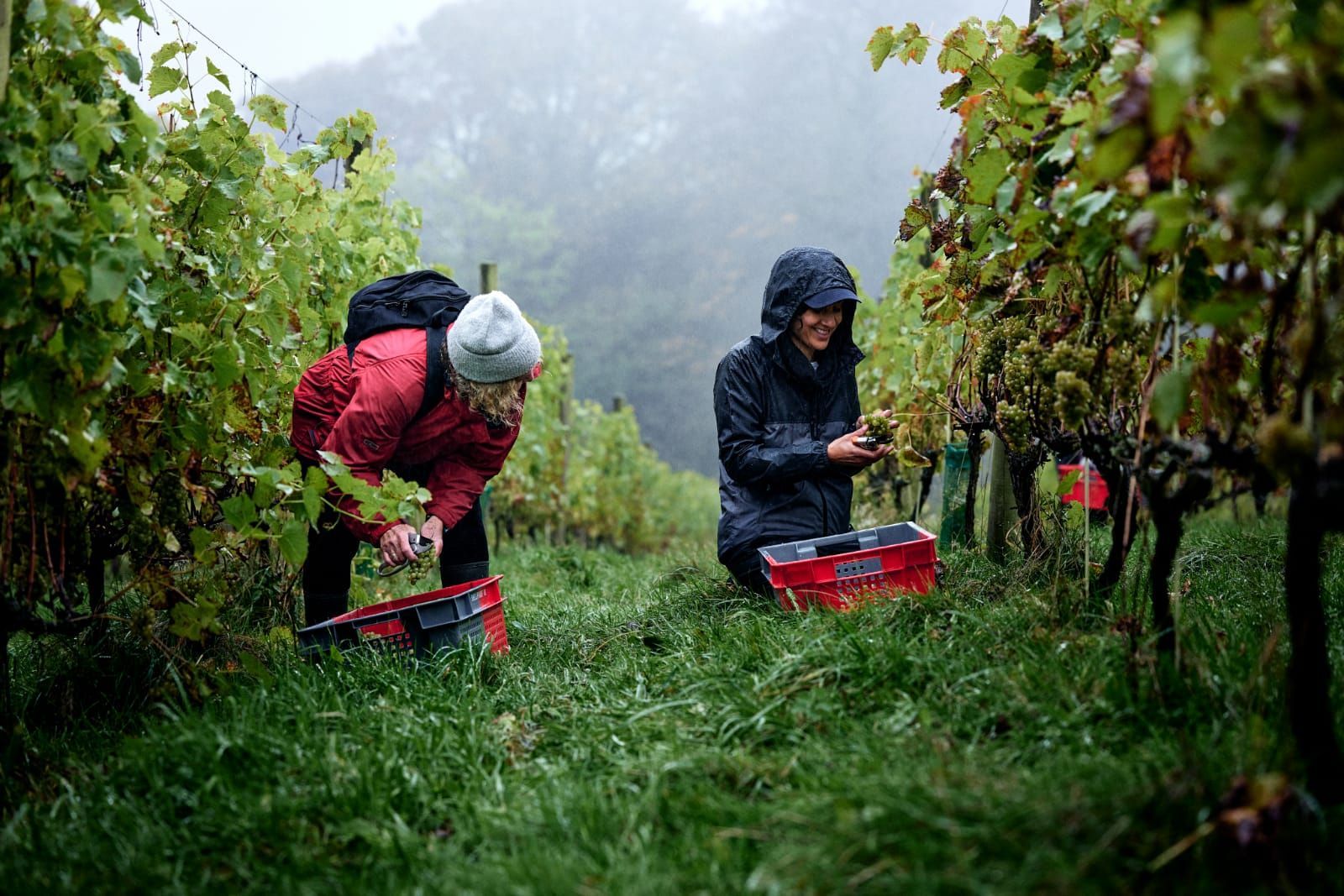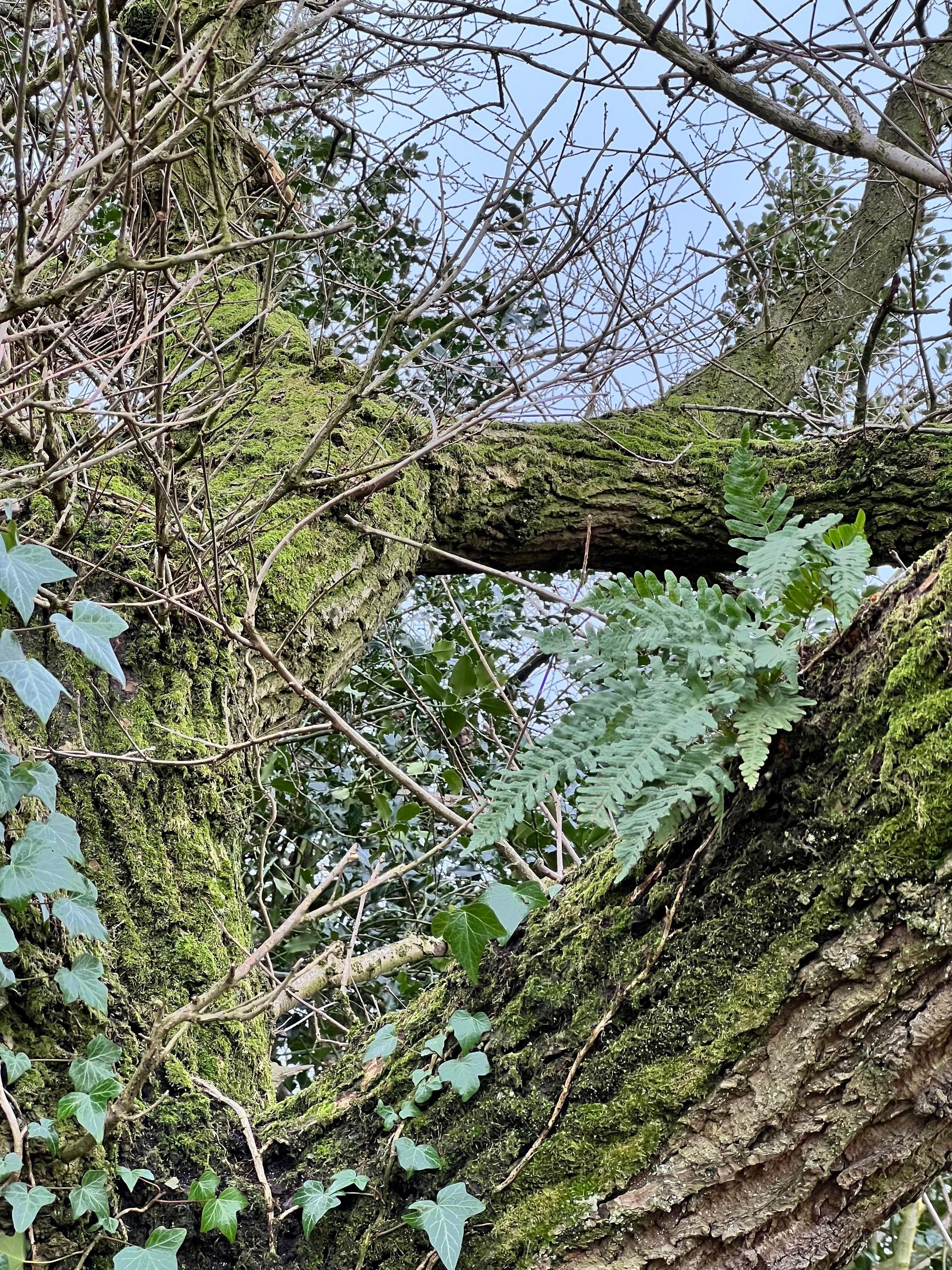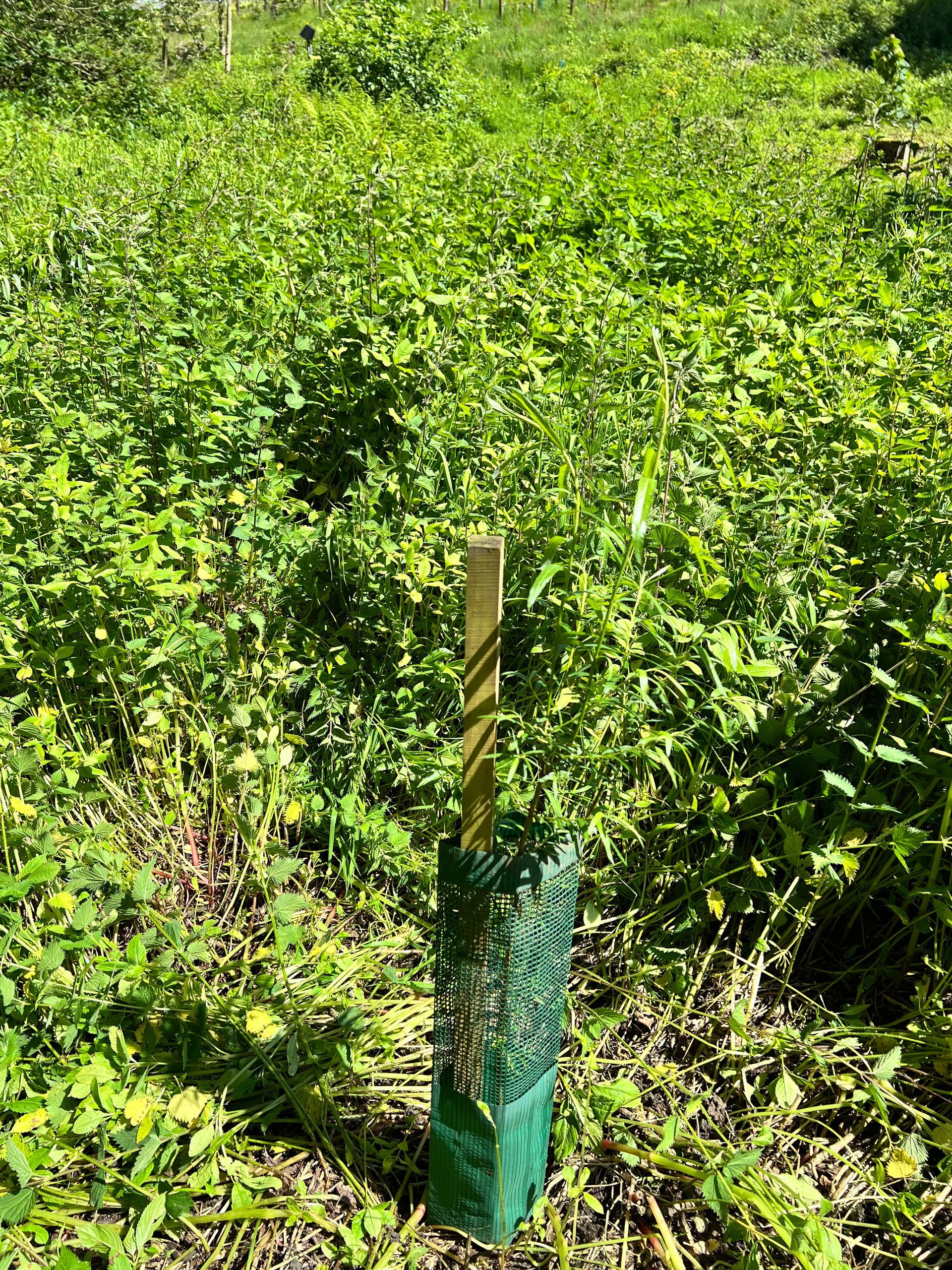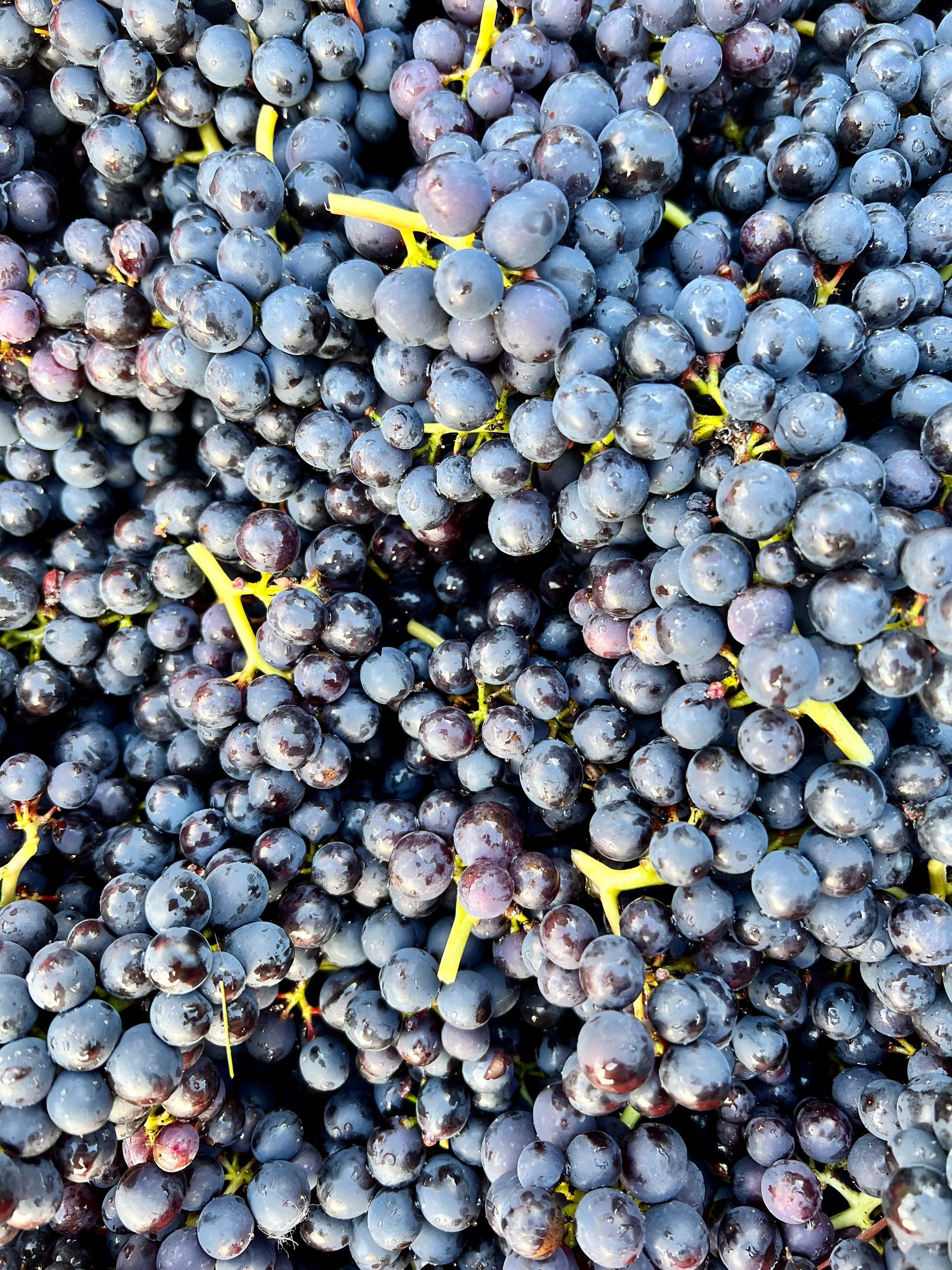Nature & Countryside
Nature, Biodiversity and Countryside is at the Heart of What we do...
Our ethos is to work with nature, to protect and nurture our soils and to harness biodiversity services to look after our vines and apples. We eschew chemicals and practice regenerative viticulture, and put nature first.
Nature is intrinsic to wellness, and quality time spent working, visiting and immersing yourself in nature will reward your body and nourish the soul and mind. As we live more disconnected lives, tethered to our smartphones, in built up environments, getting out into our countryside and immersing ourselves in nature has never been more important.
So it becomes even more important we look after the natural world, and that's our focus. Read on...
Biodiversity

We want to achieve a biodiversity net gain across our small estate, whilst producing high quality award winning wines and we believe the two aims are not just compatible but more importantly, complementary. We aim to increase the biodiversity of plants, invertebrates, mammals, amphibians, birds and reptiles right across our vineyards; and in and around our orchard.
We are custodians of ancient hay meadows, woodlands and hedgerows that are actually, locally, quite rich in life and species. But that's not the norm, in recent centuries, and particularly these last eight or so decades, we've seen an overall decline in species and biomes in our countryside. Whilst on the face of it we live in a green and pleasant land of fields and hedges, that's really, mostly, just a veneer of what should be there. The sad fact is we are one of the most nature depleted countries on earth. And sadly, that's in part due to modern agricultural practices; intensification, chemical fertilisers, pesticides and herbicides have all contributed to a loss of species and biodiversity on a scale that's frightening. We also suffer from what's known as shifting baseline syndrome, we've become accustomed to the loss of biodiversity around us, and we don't realise what we've lost. We’ve become used to viewing our ecologically depleted countryside as ancient, typically English and normal. And it’s far from it. Even sadder, we've broadly taken a position of trying to defend the status quo, because that's what's familiar to us as 'the countryside.' Social media in particular reinforces this.
Our countryside of hedges, walls, grazing sheep and cattle, interspersed with woodlands, or our moorlands shrouded in purple heathers and tussocks of grasses paint quintessentially English pastoral scenes, or upland scenes. And they are beautiful, celebrated and, in the eyes of many people what we're fighting to protect when we talk about countryside. And beautiful though they maybe, these intensified agricultural landscapes, or landscapes preserved by sheep grazing and for grouse, are severely limiting for wildlife and for plant species diversity.
But what if we could farm in harmony with nature? Using sound science to minimise inputs like fertilisers and pesticides and make biodiversity work for us? This is what we're trying to do at Amber Valley Vineyards.
We’re not saying those scenes we describe above are wrong and should be forever changed, at the expense of farming, far from it. What we’re saying is where we can farm differently in the right places and see different results and improved biodiversity as a consequence, then we should try. Indeed, agriculture has a big job - to feed us all - and in that role we should support it, but the agriculture of decades past is very different from now. There's a balance to be struck somewhere.
We have over the last 10 years changed our management practices to encourage more species, and it's working. The land around our main vineyard is relatively secluded and wild and we're seeing effects of changed management. We also have land that is registered as wildlife sites and we're working to ensure a return of species that we perhaps haven't really seen on our land since the end of World War 2, at least. Things like ancient wildflower meadows, hedgerows teeming with yellow hammers, fields carpeted with yellow rattle and cowslips and orchids. What's more we think if we get the balance right we can encourage better crops and soil health as well. In doing this we actually practice what's known as regenerative viticulture.
More about Regenerative Viticulture...
On our estate in the Amber Valley we practice
regenerative viticulture
(click the link to find out more), growing organically to work in harmony with nature to ensure we have healthy living soils that sequester more carbon and harness beneficial ecosystems to provide ecosystem services that look after our vines. We are working gradually towards being a net zero carbon business too, indeed we're almost there! Our business premises are powered by wind and solar that we capture and store in batteries, which we use to power fridges, lighting, charge our portable generator batteries and our battery powered power tools, which includes strimmers and hedge cutters and so on.
How You Can Help
We hope to start a new and interesting biodiversity project later this year (2024), which we will seek to crowdfund. Keep an eye on social media in the meantime. From time to time we'll be putting on short courses and volunteer activities that help us to meet our aims. There are a number of exciting projects in the pipeline!
Car Park voluntary payment scheme, for markets and tours etc. Your voluntary parking payment helps to support our work in ensuring we can manage the whole estate in accordance with our principles. We don't access grants for any of this work at present, our holdings are generally too small. Your payment wouldn't replace the normal investment that we make as part of the day-to-day running of our small estate but it ensures we can do a bit more to enhance biodiversity and achieve our aims.
To visit the online parking payment page, please
click here
Pocket Rainforest Project
We're embarking on an exciting project in 2024, our Pocket Rainforest Project (see below). We want to work with partners and volunteers, and with inspiration and involvement from the public, to restore and recreate a pocket rainforest in our Doehole site.
There are further details below, but in a nutshell we're encouraging regeneration of a small area of woodland near to our main vineyard, which already has features reminiscent of cool temperate rainforest.
It's a small scale rewilding project to bring one of our rarest and most important biodiverse ecosystems to our estate.
To find out more about Britain's cool temperate rainforests visit the Woodland Trust.
Find out more about Britain's rare rainforests at Lost Rainforests of Britain website, including a map of where sites are to be found.
Read more about our project below...
What is the Doehole Rainforest Project?
At our Doehole vineyard we think we have the right conditions already in place that show signs of being a rainforest like environment. We have a sheltered, steep sided location at the bottom of our vineyard, an ancient Holloway (a road carved into the landscape by centuries of use) that supports old oak, alder and willow trees with epiphytes (non-parasitic plants growing on living trees), an array of interesting lichens, mosses (bryophytes) and ferns.
We want to enhance what's there, plant more trees and recreate what was once an abundant habitat in Atlantic Britain but is now globally rare.
Britain was once covered with what was known as Wildwood, a vast but discontinuous forest, which along the Atlantic seaboard, particularly in Wales, Scotland and the South West of England, was covered in cool temperate rainforests. Even to the eastern side of the Pennines small pockets of rainforest are likely to have existed, especially in what is now the Peak District, where topography and microclimate supported it. Indeed, there are a small number of known rainforest-like pockets nearby, including, notably, Padley Gorge.
Work started in February 2024, with an unproductive, damp area below the vineyard which was planted with 18 new trees, including birches, willows, rowans and oaks. We also planted a small variety of native ferns, such as polypody ferns, harts tongue ferns and spleenworts, all of which would be found in a British cool temperate rainforest.
Our trees have been registered on the Derbyshire County Council website Million Trees project and ten of the planted trees were provided by DCC via this project.
We have space to do more over coming seasons but we also need to manage the area we've planted to deal with invasive Himalayan balsam, which has begun to dominate here in recent years. We're also battling back encroaching brambles too and for this we'll need volunteer help.
Get in touch if you want to help us!
We’re proud to be working with the University of Derby Department of Biological Sciences around our regenerative approaches to viticulture. We are providing research opportunities for postgraduate and undergraduate students in ecology within our vineyards over the coming years. We have three project areas open for investigation at the moment, including investigating and quantifying, by using sound science, the benefits of nature friendly farming practices in vineyards and orchards. These projects will examine how our regenerative approaches can align to provide ecosystem services within our vineyards and orchards and it is hoped we can demonstrate that there are costs savings thanks to lower inputs and increased benefits. Additional project work can provide opportunities for MSc students to look at the fungi flora in our vineyards and the potential benefits (ecosystem services) they bring to grape vine and apple tree management.
Placement work will explore the novel approaches to the management of Himalayan Balsam and reducing its prevalence in our wild areas. Hand-in-hand with this is the development of the management of our cool temperate rainforest project at our Doehole vineyard site.
A final project will look at quantifying the potential benefits of wooden posts used in our vineyards with a view to whether (or not as the case may be) wooden posts and the invertebrates they harbour provide a sufficient benefit to pesticide management within vines that wooden posts, despite their 8 to 12 year average lifespan, versus 25+ years for metal posts, can over a protracted time provide a cost benefit by reduced pesticide usage.
Do you want to Sponsor a Tree? Or Make a Donation?
Would you like to help us in our efforts to rewild a little corner of our Doehole site, to help support the natural regeneration, fight back against invasive plants, and help us recreate and enhance our cool temperate rainforest?
It's a great way to help you off-set your carbon footprint of a flight, or perhaps, as part of your business. With each tree planted you can off-set 3.7 tons of CO2 over a 40 year lifespan.
We'll plant other native plants, such as ferns, liverworts and shrubs that can enhance biodiversity.
Suggested contributions...
- 1 Tree £5 - 3.7ts of CO2 Sequestered
- 2 Trees £10 - 7.4ts of CO2 Sequestered
- 3 Trees £15 - 11ts of CO2 Sequestered
Our Orchard
Our orchard has been an ongoing project since around 2011 and we're hugely proud of it. We've preserved and revived interest in Derbyshire varieties here too. So this has become part heritage orchard, part community orchard, as a place where we hold local events and markets, and a deeply personal and much loved place, for our family.
The orchard is also a place for exploring wellbeing in nature too, so look out for the meditation and yoga sessions we do here. We also hold occasional relaxing craft lessons, such as willow weaving, in the orchard too.
If you want to learn more about orchards, how to maintain them and even graft trees, keep an eye out for our short courses.
If you want to find out more about our orchard take a look at this page link below, where we list and describe the trees we have and when they were planted. It's not always fully up to date though!
Link to the Wessington Pomona here.
Amber Valley Agroforestry Orchard: Growing a Sustainable Future
At Amber Valley Vineyards, we believe that farming and nature should work in harmony. Our new agroforestry orchard project blends heritage orcharding, viticulture, and wildflower conservation, creating a diverse, resilient landscape designed to enhance biodiversity, support sustainable food production, and future-proof the land against climate change. You can find out more on our blog here.
This is a long-term investment in sustainable farming, requiring specialist equipment and infrastructure to ensure its success. To help bring this vision to life, we have launched a crowdfunding initiative to support the essential ‘hardware’ costs of the project. Within this there are options for individuals to invest and get involved and businesses too. The link is further down - take a look at the packages and see what suits you or your business.
Tackling Invasive Species Organically
Before planting begins, we are working to restore the site’s natural balance. In collaboration with an MSc student from the University of Derby, we are developing a management plan to organically control invasive species such as Himalayan balsam, bracken, and bramble. Using non-chemical, ecological methods, we are protecting soil health, wildlife, and native flora - laying the foundation for a thriving orchard.
A Community-Focused Approach
As with all our biodiversity projects, we want this to be a shared effort. Volunteers will be invited to help with planting, maintenance, and conservation efforts, offering hands-on learning in agroforestry, sustainable farming, and habitat restoration.
This project aligns closely with our pocket rainforest initiative, helping to expand woodland corridors, enhance pollinator networks, and improve soil and water retention.
We are also grafting heritage and cider apple trees, ensuring that local fruit varieties remain central to the project and supporting the revival of traditional British fruit growing.
Supporting the Project
Establishing an agroforestry orchard is a significant undertaking. Beyond tree planting, it requires specialist equipmentto manage the site’s challenging topography, maintain biodiversity, and ensure long-term sustainability.
To fund this, we are launching a crowdfunding initiative, offering a range of ways to get involved, including:
- Named tree sponsorships, allowing individuals and businesses to dedicate an orchard tree.
- Exclusive guided tours and tasting events, showcasing the project’s progress.
- Corporate sponsorship packages, supporting the orchard’s biodiversity and sustainability goals.
In addition to crowdfunding, we are also seeking grants and partnerships to further support the development of this site. Go to our Go Fund Me campaign page here
A Living, Breathing Landscape
Once established, the orchard will boost pollination, support natural pest control, and create vital habitats for wildlife - all while producing fruit for future cider blends. By integrating fruit trees, vines, other crops, wildflowers, and sustainable land management, we are cultivating a productive, ecologically rich, and resilient site.
This is an evolving project, and we will be sharing updates as we progress. If you’re interested in getting involved - whether as a volunteer, supporter, or sponsor - please follow our website and social media for more details.
We are growing something truly special - an orchard for the future, rooted in sustainability, biodiversity, and community.
Volunteering With Us...
We're always keen to speak to people who want to volunteer with us. We're a small business and much of the biodiversity work we undertake is quite labour intensive and difficult to manage the costs of. So if you're willing, in sound health and robust, we'd love to hear from you as there's always some work to do to enhance biodiversity and help nature along, at any time of year. Use our contact page and head your message 'biodiversity volunteer'.








